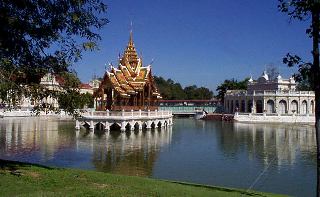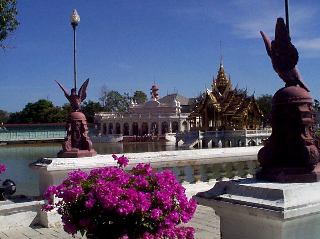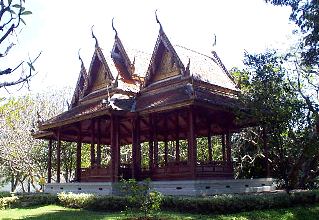
Phra Thinang Aisawan Thiphya-Art

Doll's Bridge

Public rest-house in style Thai
|
Guide to the Bang Pa-In Palace history
The Royal Palace at Bang Pa-In has a history dating back to the 17th century. According to a chronicle of
Ayutthaya, King Prasat Thong (1629-1656) had a palace constructed on Bang Pa-In Island in the Chao Phraya River.
A contemporary Dutch merchant, Jeremias van Vliet, reported that King Prasat Thong was an illegitimate son of King Ekathotsarot (1605-1610/11), who in his youth was shipwrecked on
that island and had son by a woman who befriended him. The boy grew up to become the Chief Minister. After having usurped the throne, he become known as King Prasat Thong,
The King founded a monastery, Wat Chumphon Nikayaram, on the land belonging to his mother on Bang Pa-In Island, and then had a pond dug and a palace built to the south of that monastery.
The chronicle records the name of only one building, the Aisawan Thiphaya-Art Royal Residence, which was constructed in 1632, the year of the birth of his son, the future King Narai (1656-1688).
It is not known whether or not the palace was in use till the fall of Ayutthaya in 1767. However, by 1807, when the Kingdom's best known poet, Sunthon Phu, sailed past Bang Pa-In,
only a memory of the palace remained, for the site was neglected and overgrown.
The palace was revived by King Rama IV of the Chakri dynasty, better known in the West as King Mongkut (1851-1868), who had a temporary residence constructed on the outer island of the Neo-Gothic style monastery,
Wat Niwet Thamprawat, which was built by his son and heir, King Chulalongkorn (Rama V).
|





